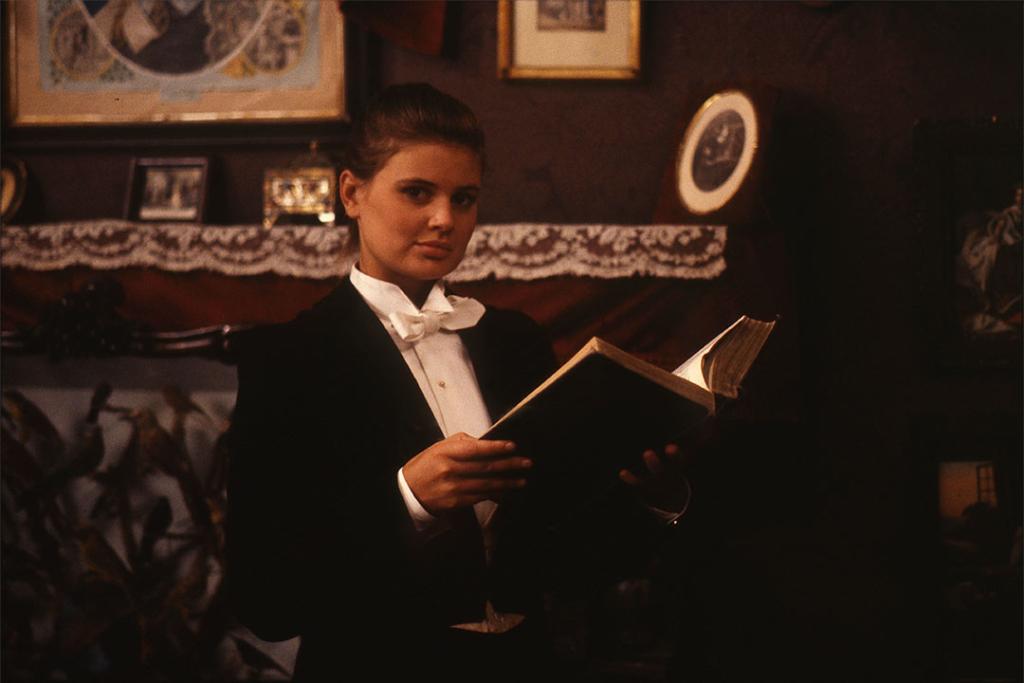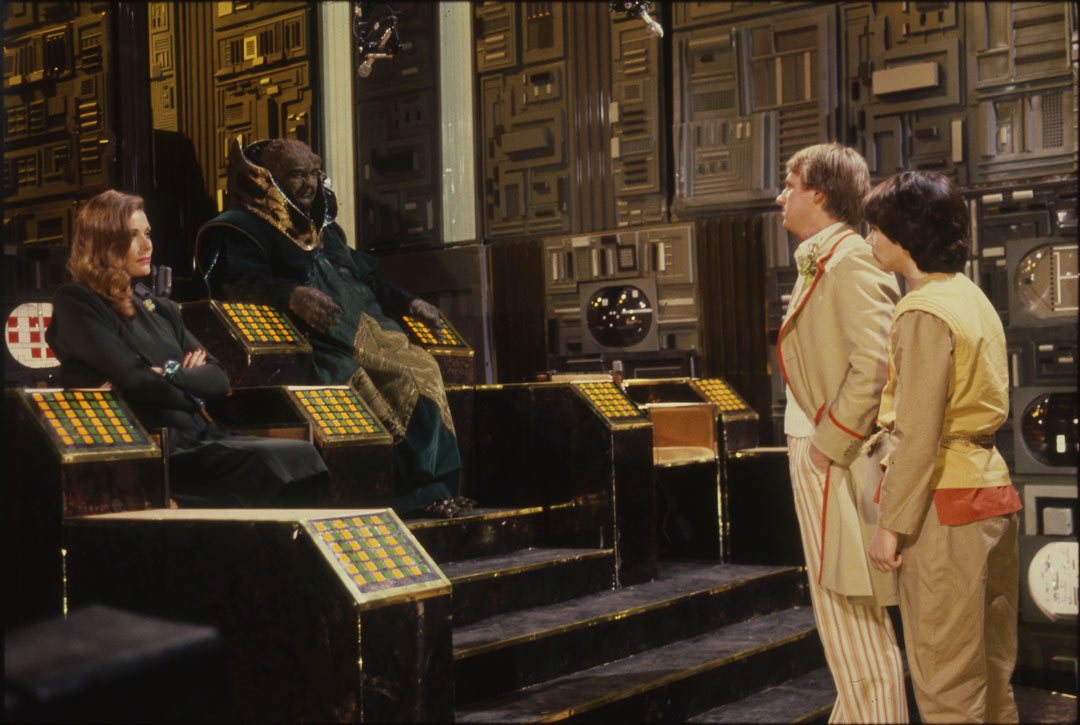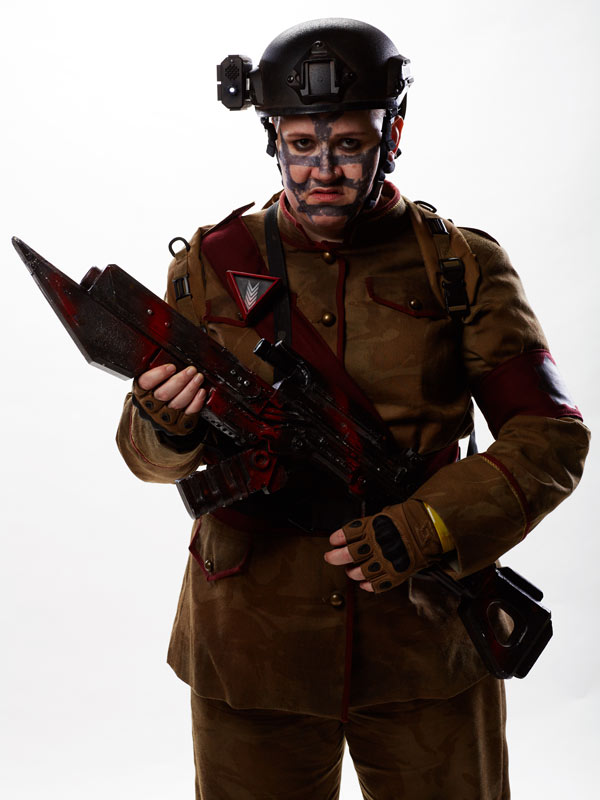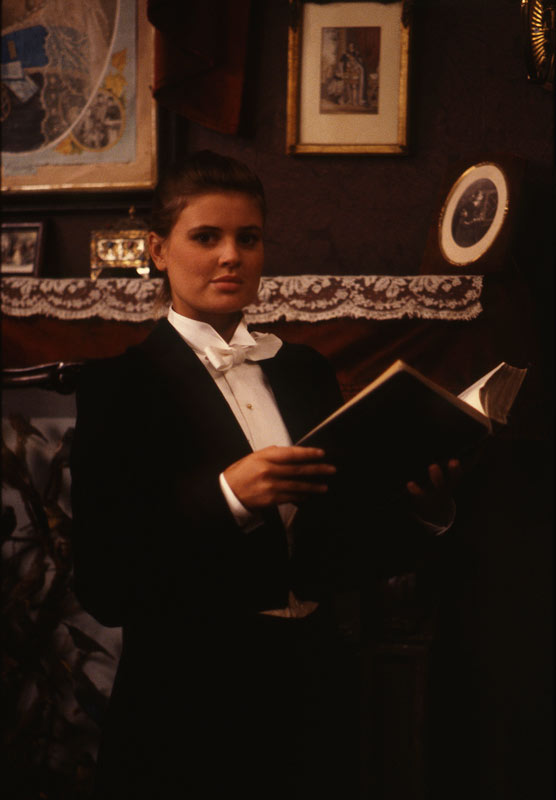LGBTQ+ and Doctor Who
Doctor Who has a long history of inclusion and representation, one of many reasons that it has such a special place in the hearts of fans. Comedian and actor Bethany Black takes a look at what this meant to her growing up.

One of my earliest television memories was running into the living room of my home and seeing a green alien sat on a throne threatening Peter Davison’s Doctor. The episode was Four To Doomsday and I both loved and was repelled by Doctor Who at the time. It was often too scary for my little brain to cope with and like most children I would watch from behind the sofa, or through a crack in the living room door so the aliens didn’t come and get me.

When I was at university I wrote an essay on the LGBT representations in Doctor Who around the time of the third series of Russell T Davies's tenure as show runner. All of the fandom that I was involved with was split between the scores of queer and LGBT allied Doctor Who fans who maintained that the show had always been full of covert LGBT representation, and the traditionalists who were furious that Russell T Davies was trying to corrupt the youth with his “Gay Agenda!”
When I was cast to play 474 in the ninth series of the revival opposite Peter Capaldi’s Doctor I was the first out trans actor in Doctor Who, playing a cloned Space Marine. The second it was announced I was in the show my phone wouldn’t stop beeping. I was driving home to Manchester from the studios in Cardiff and by the time I got home the story was everywhere - and everyone had an opinion. There were those who were incredibly happy, there was a large portion of people who just wanted to let everyone know that they didn’t care, and my personal favourite: the people who thought that me being cast was a stunt and that it made the whole show unbelievable. I’d hate to be the person who had to break it to them that Peter Capaldi isn’t actually a Timelord, and though he does have one of the biggest hearts I know of, he doesn’t have two of them.

Timelord biology is a wonderful thing. They’re not human, then don’t have the same idea of gender that humans do. For the most part The Doctor has been decidedly asexual, and this has allowed us to project who we are onto the character.
We don’t create art in a vacuum, nor do we experience it as such, we meet all the media we consume with the full breadth of our experience and we interpret it through the lens of that experience. When we create we encode meaning and sometimes people get that meaning, sometimes they bring their own. Though the episode The Happiness Patrol came out to a backdrop of the introduction of Section 28 it wasn’t about that though the parallels are so easy to see, because of what we bring to the story.
As a 10 year-old looking for who I was in the world Sophie Aldred’s Ace was someone I looked up to and wanted to be like. She seemed so cool, the bomber jacket, the baseball bat, the “nitro9” and I completely read a gay subtext in her character especially in stories like Curse of Fenric with her (even to my eye at the time) awkward flirting with the army captain. Then in the story Ghost Light, where she befriends Gwendoline in a Victorian mansion and they both dress in tuxedoes, much to the chagrin of the house’s other inhabitants, filled my little heart with joy as it clearly felt to me to be coded as lesbian even though it’s not explicitly stated. Of all the characters to have shaped who I wanted to be growing up, Ace was the top of the list.

Doctor Who has always been inclusive from its inception, three outsiders made it; and the first story was directed by a gay British Indian man, so the cries of “When did Doctor Who become so politically correct?” only have one answer - in the first meeting to discuss creating a new science fiction show for the BBC. People seem under the impression that it was with Russell T Davies rebooting the show and including a smaller percentage of LGBT characters than exist in real life, citing Captain Jack, time travelling bisexual adventurer. However this is like the people who look at the myths of ancient Greece and think Achilles and Patroclus were just good friends (spoiler, they were a lot more despite what the British Museum says).
When Michelle Gomez took over as the Master’s regeneration Missy it felt like the time had finally come for what had been talked about since Tom Baker’s days as The Doctor, that it was time for a woman to carry the name and Jodie Whittaker has done a fantastic job even if the response from some quarters showed us how much further we have to go.
All I know is that seeing the Doctor regenerate into a woman this time, and seeing that same character whose basic moral and emotional centre has remained unchanged since that November night in 1963, would have meant the world to me as a kid growing up and watching this. It would feel like real representation that I didn’t see anywhere else in the 80s. Heck, it meant that to 43 year old me who sits down in front of the telly with marmite on toast and a cup of tea to watch Doctor Who now. I hope it carries on representing for at least another 60 years.
All images © BBC
